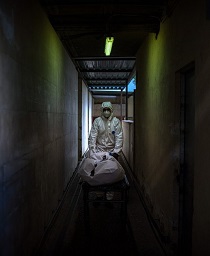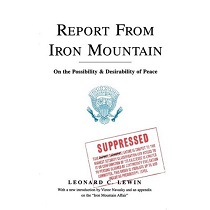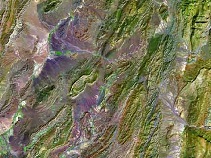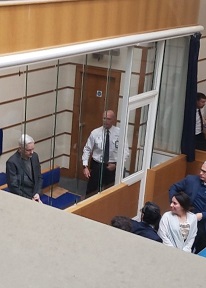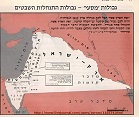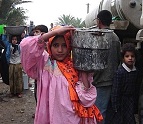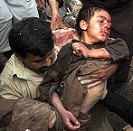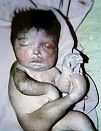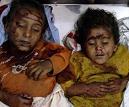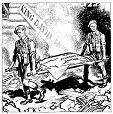Afghanistan aid conference signals indefinite foreign occupation
The truth is that the US and its allies, and all those who have collaborated with them, are guilty of war crimes.
The United States and its allies convened a so-called aid conference for Afghanistan in Tokyo last Sunday, where donor countries pledged to provide about $4 billion a year in civil programs beyond 2014, when most foreign combat troops are scheduled to leave the country.
Afghan President Hamid Karzai, head of the country’s puppet regime, absurdly declared: “Today’s Tokyo conference will go down in the developing history of Afghanistan as a milestone on the country’s long journey to self-reliance, prosperity, stability and peace.”
The truth is that more than ten years after the October 2001 US-led invasion, which has devastated Afghanistan and its people, the conference was another preparation for an indefinite de facto foreign occupation. The one-day Tokyo gathering, attended by about 70 countries and organisations, was the third recent step taken by the Obama administration to cement Washington’s grip over Afghanistan far beyond the troop “draw down.”
Just a day before the Tokyo meeting, the US nominated the Afghan regime as its 16th “major non-NATO ally” (MNNA), making it formally eligible for military training, loans of equipment, and financing to lease weaponry.
In May, Karzai signed an “Enduring Strategic Partnership” agreement with Obama, providing for least 20,000 US troops, including contingents of special operations forces, to remain beyond 2014. The US will also control air power in the country and, through the deployment of “trainers” and “advisors,” direct the operations of the Afghan security forces.
The $4 billion per year promised in Tokyo was less than the $4.1 billion in yearly military assistance pledged at May’s NATO conference in Chicago, to fund the Afghan security forces from 2015 to 2017. It also represents a decline from the current level of civil aid of about $5 billion annually. While hailing the aid pledges, US Secretary of State Hillary Clinton declined to put a figure on the American contribution. As in the past, much of the promised aid for civilians will never eventuate.
Karzai once again vowed to combat graft, and agreed to an “accountability” regime to ensure that funds were not diverted by dishonest officials. “We will fight corruption with strong resolve wherever it occurs,” he told the conference.
Similar empty claims were made in Tokyo a decade ago, at an International Conference on Reconstruction and Aid for Afghanistan, from January 21 to 22, 2002.
At that meeting, US Treasury Secretary Paul O’Neill flatly told Karzai to “keep his government small.” Karzai duly offered guarantees that his administration would be lean, combat corruption and allow foreign audits of its budget. Karzai also gave repeated promises to uphold the free market and encourage foreign investment.
For its part, the US declared that the occupation would open up a new period of peace and prosperity for all Afghans. Ten years on, more than half its people live in extreme poverty. This year a severe drought and high food prices have made it even harder for families to feed their children. The cost of wheat—the basic staple for most families—has increased by 60 percent since last year.
An estimated 30,000 children die every year from malnutrition and related diseases. The unemployment rate has remained around 40 percent since the US invasion. In a sign of deepening social distress, three times the number of Afghans fled their country in 2011 compared to four years earlier. Last year—when civilian casualties rose for a fifth straight year, to 3,021 killed—another 100,000 people became internal refugees.
Widespread opposition to foreign military occupation is reflected in the stream of recruits into the Taliban and other insurgent groups, which dominate many rural areas. Despite the Obama administration’s massive “surge” in the number of NATO and Afghan forces during the past two years, insurgents have stepped up their attacks this summer to take back key areas. So far this year, more than 225 NATO service members have been killed in Afghanistan.
Sunday, the day of the Tokyo conference, was particularly costly. Roadside bombs and militant attacks killed seven US soldiers, seven Afghan police officers and 19 civilians. On Monday, suicide attacks on two police headquarters and other assaults killed three policemen, an Afghan prosecutor, two children and 14 attackers, according to officials. At least 60 other people were wounded.
The insurgent counter-offensive has been fuelled by popular outrage over constant NATO Special Forces night raids and air strikes that kill innocent civilians. These operations have continued despite Karzai’s public demands for a halt, pointing to the fact that he is a widely hated pawn.
The Obama administration has also escalated its military violence across the border in Pakistan, where its drone strikes have killed more than 3,000 people since 2009, of whom less than 200 have been identified as known “militants.”
Last Friday, the US carried out another such strike, just days after extracting an agreement from Pakistan’s government to resume military supplies to Afghanistan via Pakistan. The attack was reported to have killed up to 24 people. It signaled that the unmanned aerial strikes would continue, despite Pakistani parliamentary resolutions and widespread popular protests against the reopening of the supply corridor.
Over the past 24 hours, Western media outlets have given prominent coverage to a video purporting to show the public execution by Taliban forces of a woman for committing adultery. The US and NATO allies have seized upon the footage, thought to have been taken three weeks earlier, to justify their extended operations throughout the country. For its part, the Taliban denied responsibility for the killing, and reportedly executed two local men involved.
The fact that the killing took place in a village just 100 kilometres north of the capital Kabul, however, underscored the Karzai regime’s lack of control over much of the country. Just months ago, Parwan province, where the Qimchok village is located, was declared to be “Taliban-free.” In February, Parwan Governor Abdul Basir Salangi described the province as “the backbone of security” in Afghanistan.
In comments echoed by Western governments, Karzai denounced the woman’s death as a “heinous and unforgivable crime.” The truth is that the US and its allies, and all those who have collaborated with them, are guilty of war crimes. The US invasion was never about uplifting the lives of ordinary people in Afghanistan, or protecting them from the Taliban and Mujaheddin groups, with whom Washington had earlier worked closely.
Instead, US imperialism sought to bolster its geo-strategic domination of Afghanistan and the wider, energy-rich Central Asian and Middle East regions. In 2001, the 9/11 terrorist attacks provided a pretext for the previously-prepared invasion of a strategically-located country that borders both Iran and China. A decade later, Afghanistan’s people are still paying a terrible price.
The author also recommends: International aid pledges fall far short of Afghanistan’s basic needs
___________________________________________________________________________________
Article published here: http://www.wsws.org/articles/2012/jul2012/afgh-j10.shtml
URL: http://www.a-w-i-p.com/index.php/2012/07/10/afghanistan-aid-conference-signals-indef

